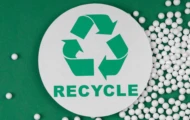Mechanical recycling is the most common method of plastic recycling in Europe and plays a crucial role in the region’s efforts to manage plastic waste. This process involves turning plastic waste into new products, thereby reducing the need for virgin plastic and contributing to a more sustainable, circular economy1.
The process of mechanical recycling begins with the collection and sorting of plastic waste. Once collected, the plastic waste is sorted by type and color, then cleaned to remove any impurities. The clean plastic is then shredded into small flakes, which are melted and extruded into pellets. These pellets, also known as recycled plastic granules, can be used to manufacture new plastic products1.
Mechanical recycling has several advantages. It is a well-established and widely used process, capable of handling large volumes of plastic waste. It also allows for the recycling of a variety of plastic types, including PET, HDPE, and PVC1.
However, mechanical recycling is not without its challenges. It requires high-quality input material, meaning that the plastic waste must be well-sorted and free from contaminants. Additionally, each time plastic is mechanically recycled, its polymer chains are shortened, which can degrade the quality of the plastic1.
Despite these challenges, mechanical recycling remains a key component of Europe’s plastic recycling efforts. With ongoing advancements in sorting and processing technologies, the efficiency and effectiveness of mechanical recycling are set to improve, making it an even more valuable tool in the fight against plastic waste.
May not be reproduced without permission:Rumtoo Recycling Machinery » Mechanical Recycling: Turning Waste into New Products

 Rumtoo Recycling Machinery
Rumtoo Recycling Machinery Contact Us
Contact Us 